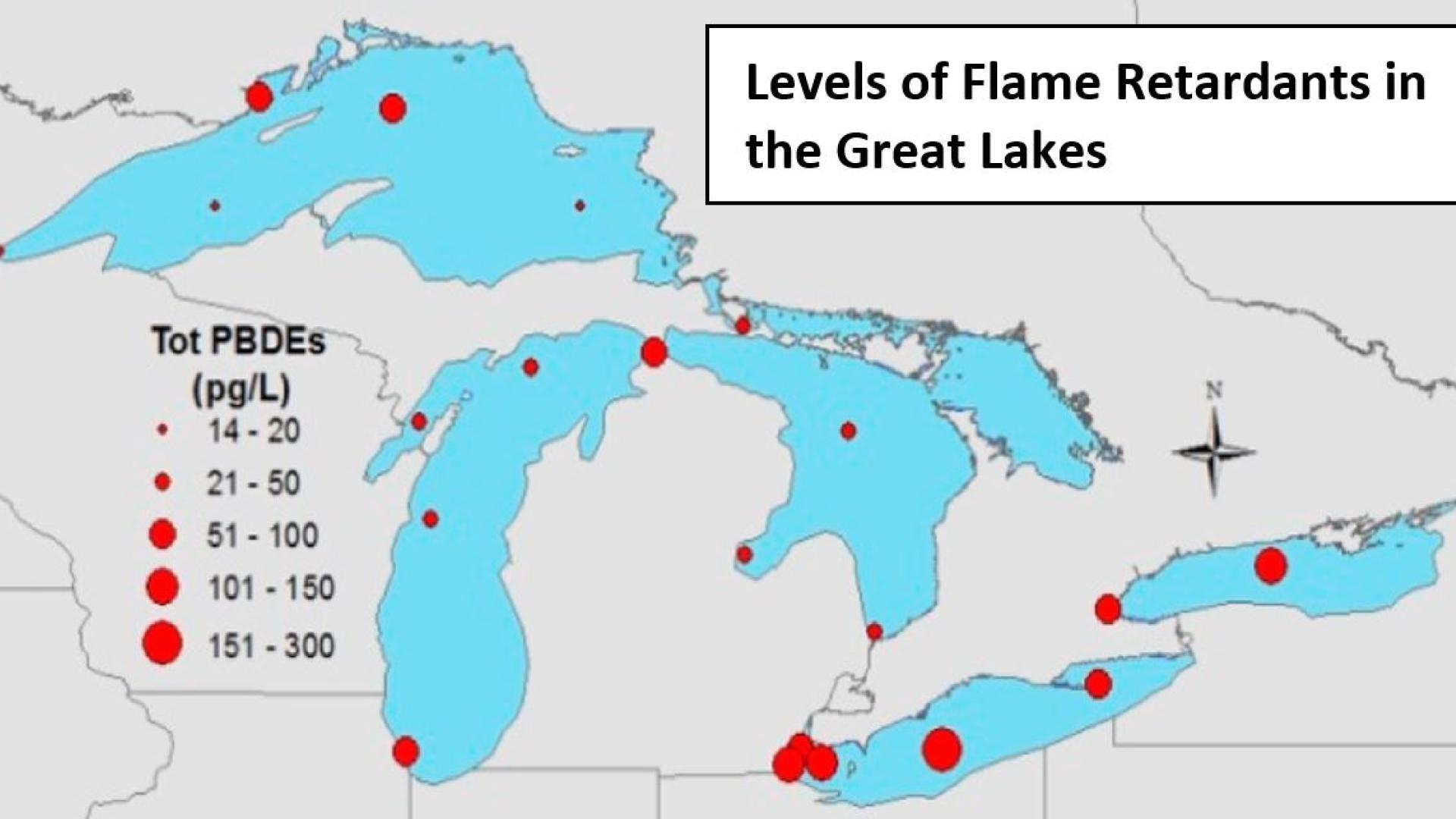
Many of us don’t realize that when we buy a new couch, stove or computer, we may bring flame retardant chemicals into our homes.
Flame retardants have been used in a wide variety of commercial and consumer products since the 1970s, including electronic devices, plastics, mattresses, furniture and carpet. While one group of such chemicals – polybrominated diphenyl ethers or PBDEs – have been phased out in Canada and the United States due to negative impacts on the environment, other flame retardant chemicals are still used in both countries.
These substitute flame retardants often have been found to be just as toxic as the ones they replaced. In addition, imported products may still contain PBDEs. PBDEs are persistent, bioaccumulative, toxic to humans and the environment, and have been found in the Great Lakes at levels that could be harmful to human health and wildlife.
Efforts by Canada and the United States to phase out the manufacture and import of some PBDE chemicals and develop strategies to reduce their levels in the environment have been somewhat successful, as shown by declining concentrations of PBDEs in the Great Lakes environment.
However, residual PBDE flame retardants are still present throughout the Great Lakes basin at higher levels than necessary to protect human and wildlife health. Substitute but still harmful flame retardants also are now building up in the environment.

Canada and the US governments designated PBDEs as a Chemical of Mutual Concern (CMC) in May 2016 under Annex 3 of the Great Lakes Water Quality Agreement. This designation requires that a binational strategy be developed and implemented to prevent, control and monitor the chemical’s presence in the Great Lakes ecosystem.
The International Joint Commission’s Great Lakes Water Quality Board (WQB) has studied how to reduce the release of PBDEs into the Great Lakes and released its second report on polybrominated diphenyl ethers (PBDEs) in late January. While the first report, released by the Commission in November 2016, outlined elements of a successful binational control strategy as required under the Agreement, this second report proposes several actions for the Commission to consider recommending to the governments to address challenges in seeking safer alternatives to the use of PBDEs and other toxic chemicals as flame retardants.
In its second report to the Commission, the WQB recommends several actions to eliminate inputs of PBDEs and other toxic flame retardants into the Great Lakes environment (see infographic). These range from redesigning options to protect from flammability that do not use toxic substances to developing extended producer responsibility programs as a method to avoid the release of PBDEs and other flame retardants during production, use, recycling and disposal of products.
The WQB also is concerned that recycling products containing PBDEs or other toxic flame retardants will result in the new products, such as bottles and toys, unintentionally containing these toxic substances. The board recommends that governments and responsible industries explore ways to avoid this contamination of products made from recycled materials. The WQB also recommends that the public have easy access to information on whether a product they are buying contains unintended contamination by flame retardants.
The WQB concludes that public education is essential so that the next time we bring a new laptop or recycled products into our home, we know we’ve chosen those that don’t contain harmful flame retardant chemicals.
There is a long history of IJC involvement on flame retardants. “The Commission is concerned that the number of chemicals being monitored to establish the chemical integrity of the Great Lakes ecosystem is inadequate for that purpose. Of particular concern are many unmonitored chemicals, especially pharmaceuticals, flame retardants, and high-volume chemicals, such as a new generation of biodegradable pesticides, which have the ability to dissolve in both water and fat and therefore often show unusual patterns of bioaccumulation and environmental degradation … Many flame retardants are brominated organic compounds similar in structure to PCBs, and can have even greater toxicity than their chlorinated counterparts. Some have been appearing in waters and biota of the Great Lakes system where they have not been previously documented.”
- From the IJC’s 11th Biennial Report to governments, published in 2002.

Sally Cole-Misch is the public affairs officer for the IJC’s Great Lakes Regional Office.




